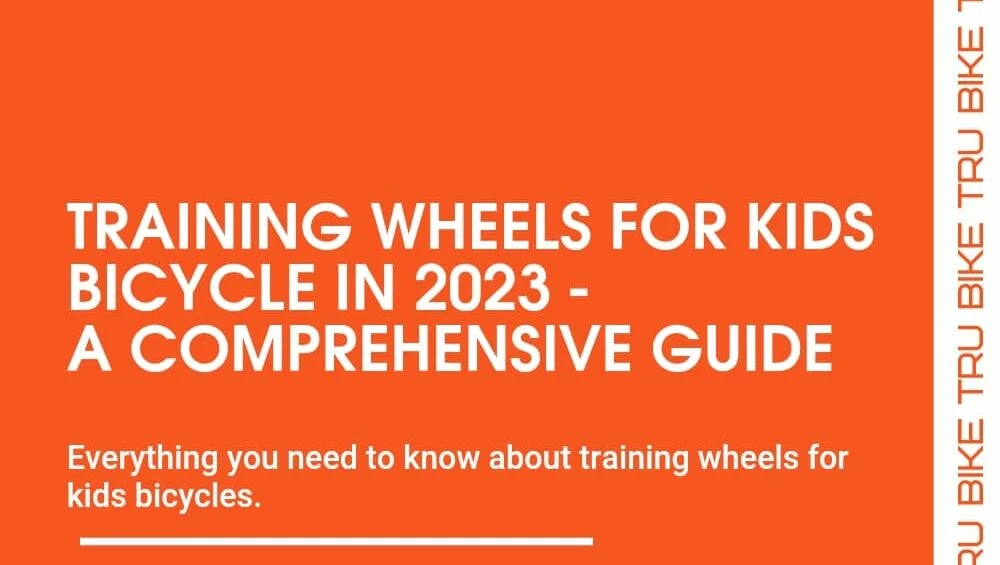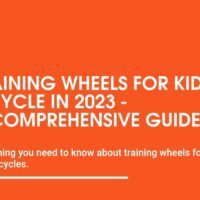Everything you need to know about training wheels for kids bicycles.
Riding a bicycle is a cherished childhood milestone. It is a symphony of laughter and determination that echoes through the years. It’s a magical transition, the moment those wobbly first steps on two wheels open up a world of adventure. Amid the range of tools designed to make this journey smoother, training wheels stand as a tried-and-true companion.
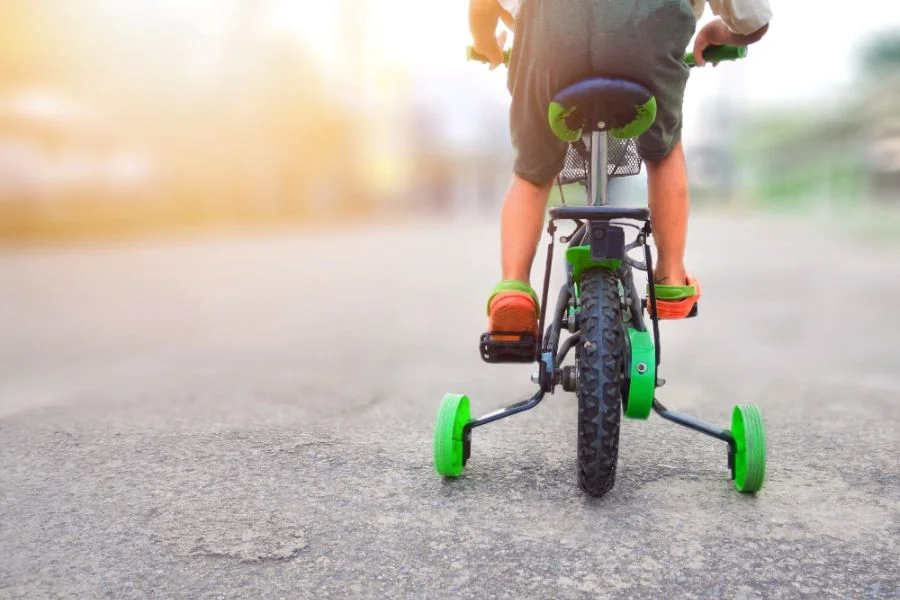


In this in-depth guide, we’ll immerse ourselves in the landscape of training wheels in 2023 for cycles, unraveling their benefits, limitations, and even exploring the possibility of pedaling without their support.
Table of Content
Advantages of Training Wheels for Kids’ Bicycles – Exploring the Benefits
When answering the question, can you learn to ride a bike without training wheels, it’s crucial to know its advantages. When it comes to helping children transition into the exciting world of cycling, training wheels for cycles emerge as a popular choice. These sturdy additions to a bicycle provide a range of benefits to young riders.
Let’s take a closer look at each of these advantages.
1. Stability – Confidence Boosting Platform
- Enhanced Balance –
Training wheels for cycles offer a stable base. It helps kids find their balance without the fear of toppling over. This security boosts their confidence. It encourages them to take their first pedal strokes.
- Fear Reduction –
The stability provided by training wheels reduces the fear of falling. It enables children to focus on other aspects of cycling, such as steering and pedaling, without the constant worry of accidents.
- Early Comfort –
Young riders feel secure while pedaling with the support of training wheels. It allows them to build muscle memory and coordination at their own pace.
2. Safety – A Protective Cushion
- Preventing Tumbles –
One of the most significant advantages of training wheels is their ability to prevent falls and minimize injuries. The presence of these wheels acts as a protective cushion. It mitigates the impact of potential accidents.
- Parental Peace of Mind –
For parents, the safety aspect is paramount. Bicycle training wheels provide a safety net that allows kids to explore cycling while parents can breathe easier knowing that their child is less likely to experience major falls.
- Gradual Risk Reduction –
As kids grow comfortable with training wheels, they gradually become more at ease on a bicycle. This aids in developing a sense of self-assurance over time.
3. Skill Building – Stepping Stones to Independence
- Balancing Act –
Bicycle training wheels offer a stepping stone toward mastering balance. As children become accustomed to the motion of pedaling and steering, they naturally refine their ability to stay upright.
- Coordination Development –
Learning to cycle involves a complex coordination of movements. Training wheels provide a controlled environment where kids can hone these skills before moving on to more advanced techniques.
- Early Riding Milestones –
With training wheels for cycles, young cyclists achieve the milestone of riding a bicycle sooner. This early success can serve as a motivating factor for kids. It spurs them on to explore cycling further.
- Independence – A Gateway to Exploration
- Solo Adventures –
With bicycle training wheels, kids can venture out on their own cycling expeditions. They can experience a taste of independence while still benefiting from a safety buffer.
- Exploration and Discovery –
The newfound independence instills a sense of adventure in kids. It encourages them to explore their surroundings and embark on mini-adventures in their neighborhood.
- Confidence Boost –
Riding with bicycle training wheels cultivates a sense of achievement in children. It helps them build self-confidence as they learn to navigate their environment on two wheels.
Using training wheels for cycles into a child’s bicycle journey offers numerous advantages.
Exploring the Constraints of Training Wheels – Unveiling Their Limitations
When wanting to know the answer to can you learn to ride a bike without training wheels, it’s important to consider its disadvantages as well. Training wheels offer a supportive gateway to cycling for kids but it’s important to shed light on their limitations.
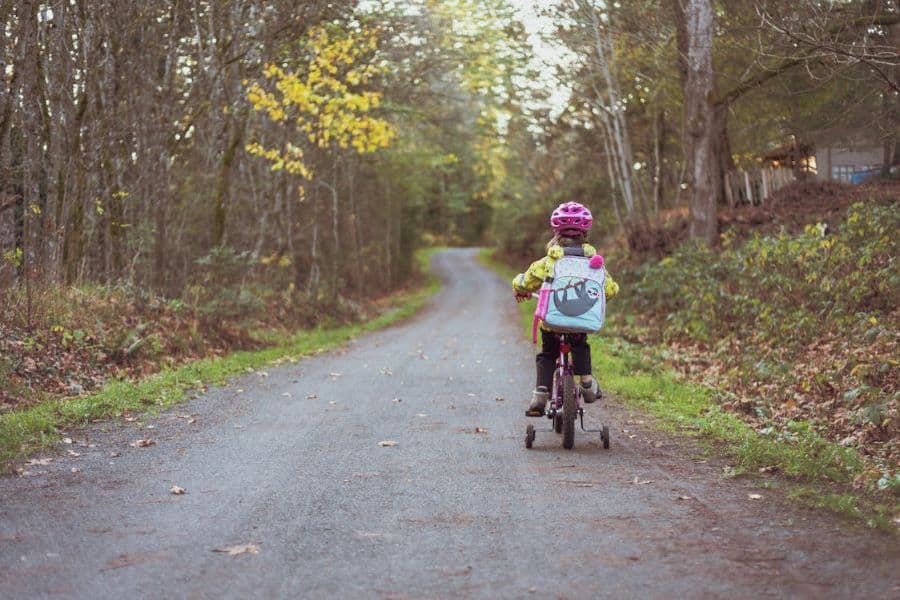


These disadvantages, though not to be dismissed, can serve as valuable insights for parents as they guide their young ones on the path to two-wheeled mastery.
Let’s delve into these limitations.
1. Dependency on Stability
- Stifled Balance Development –
Relying solely on bicycle training wheels can inhibit the natural development of balance skills. Children may become reliant on the extra stability provided by the wheels. This hinders their ability to transition smoothly to riding without assistance.
- Delayed Confidence –
A prolonged dependency on training wheels might lead to a lack of self-assurance when faced with the prospect of riding a bike without them. This could impede a child’s willingness to embrace the exciting challenge of cycling independently.
- Overcoming the Dependency –
To mitigate this limitation, consider introducing balance-building activities alongside training wheel usage. Encourage your child to practice gliding, scooting, and even walking the bike to foster a better sense of equilibrium.
2. Turn Control Challenges
- Limited Maneuverability –
Training wheels for cycles can hinder the development of essential steering skills required to navigate turns effectively. Children may struggle to learn the art of leaning into turns, which is crucial for maintaining balance during cornering.
- Unfamiliar Territory –
When transitioning to a regular two-wheeled bike, kids might find it initially challenging to control their turns without the familiar support of training wheels. This could lead to frustration.
Navigating Turn Challenges –
To address this constraint, encourage your child to practice making wide turns while using training wheels for cycles. As they gain confidence, gradually guide them toward leaning into turns. Then you can introduce the concept of countersteering.
3. Impact on Confidence
- Cautious Progression –
Training wheels provide a safety net but they might make children cautious when faced with the prospect of riding without them. This approach could hinder their willingness to explore new challenges and embrace the thrill of independent cycling.
- Adapting Mindset –
Transitioning from training wheels to riding without assistance requires a shift in mindset. Children need to recognize that it’s normal to experience a learning curve and that a few falls are part of the process.
- Building Resilience –
Encourage your child to view setbacks as opportunities for growth. Praise their efforts and perseverance, regardless of the outcomes. Celebrate each small achievement. This fosters a positive attitude toward challenges.
Training wheels for cycles provide crucial stability and support. It’s imperative to consider their limitations as well.
Alternatives to Training Wheels
To know the answer to the question, can you learn to ride a bike without training wheels, let’s explore alternatives to training wheels.
1. Balance Bikes
These pedal-less bicycles focus solely on balance and coordination. They enable children to develop a natural sense of equilibrium before introducing the complexity of pedaling.
2. Running Alongside
A hands-on approach involves parents or guardians running alongside the child while they practice pedaling. This offers physical support while encouraging balance.
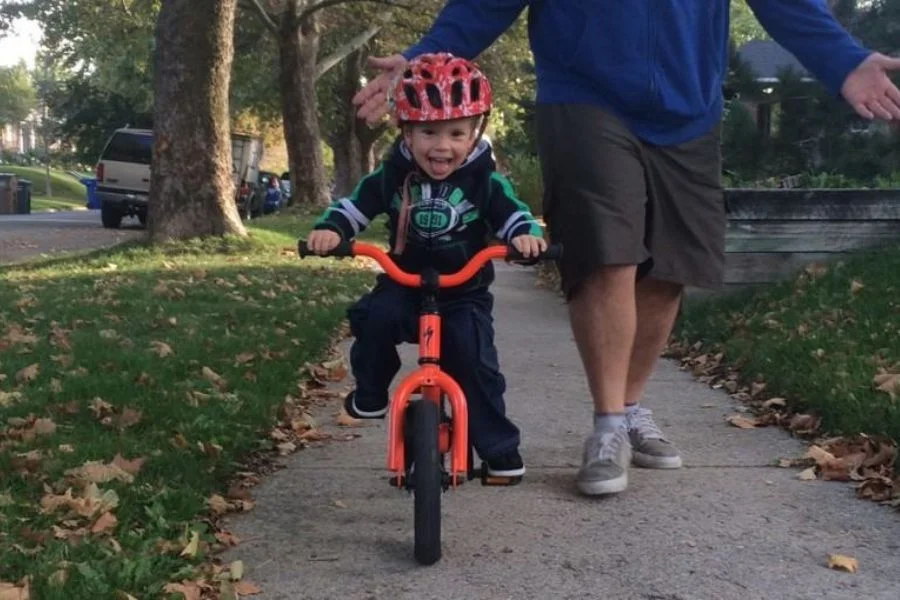


3. Pedal-Assist Bicycles
Some bicycles come with detachable pedal assist mechanisms. These allow kids to start with support. They can then transition to pedaling as they gain confidence.
Learning to Ride Without Training Wheels
Contrary to popular belief, children can indeed learn to ride a bicycle without training wheels.
This alternative approach involves a step-by-step process.
- Balance Mastery
Start with a balance bike that lacks pedals. This allows children to concentrate on balance and steering without the added complexity of pedaling.
- Pedal Removal
Transition to a regular bike but remove the pedals. Encourage your child to use their feet to propel themselves, promoting balance mastery.
- Gradual Reattachment
Reattach the pedals and allow your child to gradually incorporate pedaling while maintaining the balance they’ve honed.
Ready to Set Your Child on a Pedaling Adventure? Explore Tru Bike’s Array of Kids Bicycles.
On the journey of teaching your child how to ride a bicycle, consider the exceptional offerings of Tru Bike, your partner in providing quality cycling experiences in 2023.
Tru Bike’s Unique Selling Points (USPs)
- Craftsmanship
Tru Bike prides itself on delivering bicycles crafted with precision. Every detail from the frame design to the quality of materials used, reflects the brand’s commitment to excellence.
- Safety First
Your child’s safety is paramount, and Tru Bike understands that. Each bicycle undergoes stringent quality checks to ensure that it meets safety standards. This gives you peace of mind.
- Customized Learning
Tru Bike’s range of kids’ bicycles is thoughtfully designed to cater to different learning stages. Whether your child is just starting with balance bikes or is ready to transition from training wheels, there’s a bike tailored to their needs.
- Durability
Kids can be tough on their bicycles, which is why durability is a priority for Tru Bike. Their bicycles are built to withstand the rigors of learning and playing, ensuring that your investment lasts.
Experience the Tru Bike Advantage Today
Tru Bike is one of the best kids bicycle manufacturing company and Top electric bicycle manufacturing companies in India in 2023. Elevate your child’s cycling experience by choosing Tru Bike as your partner. You can contact them here.
With a commitment to quality, safety, and customized learning, Tru Bike offers a range of kids’ bicycles that cater to every stage of your child’s cycling journey. Don’t miss the chance to explore their offerings and set your child on the path to becoming a confident, independent cyclist.
Till then,
Ride and shine!
FAQ
Q1. Are balanced Bikes better than Training wheels?
Yes, balance bikes are superior to training wheels. They teach balance and coordination early, making the transition to pedal bikes smoother and faster, unlike training wheels that hinder balance development.
Q2. At what age do kids use training wheels?
Training wheels are typically used around ages 3 to 6. However, consider balance bikes as they promote earlier balance and coordination development, leading to a smoother biking transition.
Q3. Are bicycle training wheels supposed to touch the ground?
Training wheels should be a bit higher than the back tire. This makes the bike wobble a little when the child rides, which might seem strange but actually helps keep them safe.



